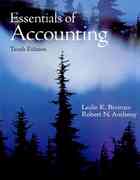Question
1-Consider an economy in which there's one farmer who grows corn and another farmer who grows sheep, and they engage in direct exchange so that
1-Consider an economy in which there's one farmer who grows corn and another farmer who grows sheep, and they engage in direct exchange so that they consume both goods. Which of the following is true?
A-There is no money in this economy since it's a barter system.
B-In this economy, only corn is considered money.
C-In this economy, only sheep is considered money.
D-In this economy, both corn and sheep are considered money.
2-As a response to the 2008 crisis, some central banks decided to decrease the percentage of reserves required for financial institutions, as an attempt to increase the M1 money supply. However, there is no guarantee this policy would be successful. Which of the following statements about the effectiveness of the policy is incorrect?
A-The policy would decrease the money multiplier and, therefore, decrease the M1 money supply
B-Despite the smaller required reserves, banks may choose to keep more voluntary reserves due to uncertainty about the borrower's ability to pay, rendering the policy ineffective
C-People may choose not to re-deposit their money, due to a lack of trust in the financial system, dampening the effectiveness of the policy
D-For the money multiplier to work we need a multi-bank system, and the closure of a substantial amount of banks decrease the likelihood re-deposits and could dampen the effectiveness of the policy
3- About financial intermediaries, which of the following is correct?
A-Banks, pension funds and insurance companies are all financial intermediaries, but only banks are depository institutions
B-Banks, pension funds and insurance companies are all financial intermediaries and depository institutions
C-Banks, pension funds and insurance companies are not financial intermediaries nor depository institutions
D-Banks are both financial intermediaries and depository institutions, while pension funds and insurance companies are neither
4- What are the functions of money?
A-Medium of exchange, unit of account, store of value, and standard of deferred payment
B-Medium of exchange, unit of account, and inflation
C-Medium of exchange, store of value, standard of deferred payment and inflation
D-Store of value, unit of account, standard of deferred payment and interest rate anchor
Step by Step Solution
There are 3 Steps involved in it
Step: 1

Get Instant Access to Expert-Tailored Solutions
See step-by-step solutions with expert insights and AI powered tools for academic success
Step: 2

Step: 3

Ace Your Homework with AI
Get the answers you need in no time with our AI-driven, step-by-step assistance
Get Started


